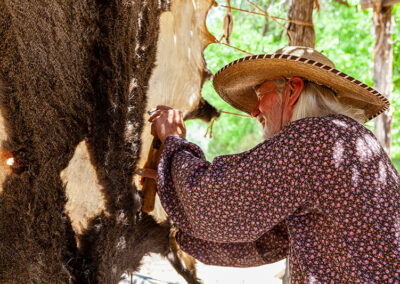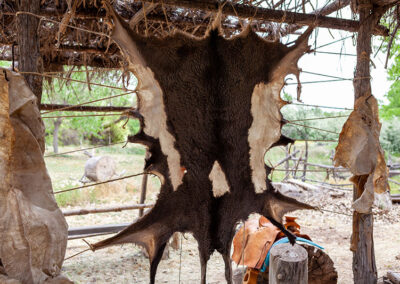Hide Tanning
Tanned deer, elk and buffalo hides were used to make pants, shirts, jackets, botas (leggings), moccasins and blankets. These tanned hides were often shipped south on the Camino Real and became a major trade item between the Spanish and Native groups.
The traditional hide-tanning process involves four basic steps:
1. Scraping, to remove hard connective tissue and hair.
2. Application of a softening agent by soaking and/or rubbing with animal brains or plant material.
3. Stretching to break down and continue to soften the fiber.
4. Water resisting and/or coloring by suspending over a cool smoky fire. Resin from smoke adheres to the hide and makes it remain soft when exposed to water and to stay soft when it dries. Smoke from different types of wood produces different colors. Coloring may also be achieved by soaking the leather in plant material or rubbing it with clay.



